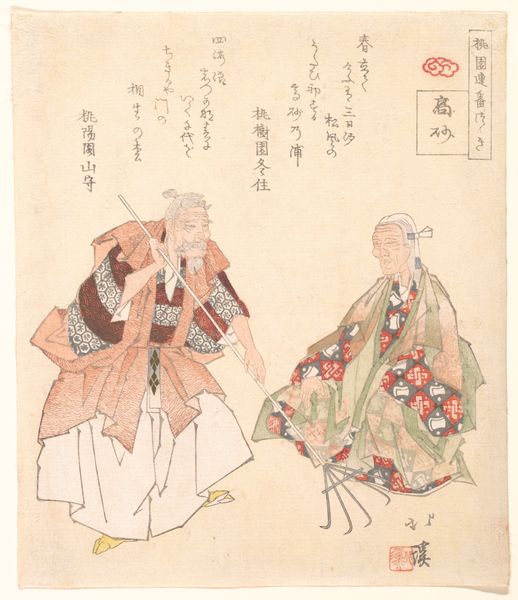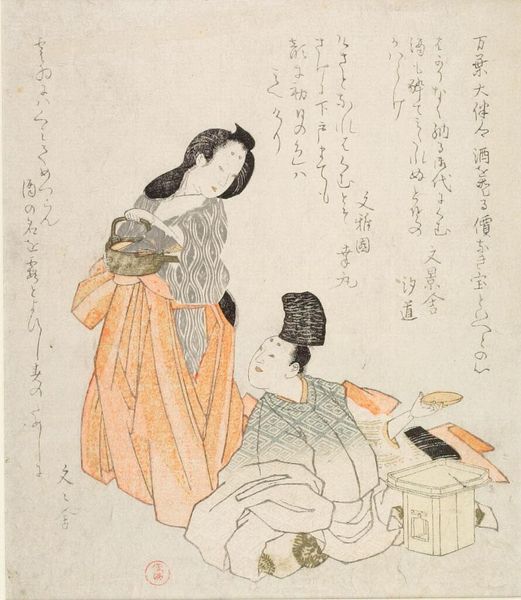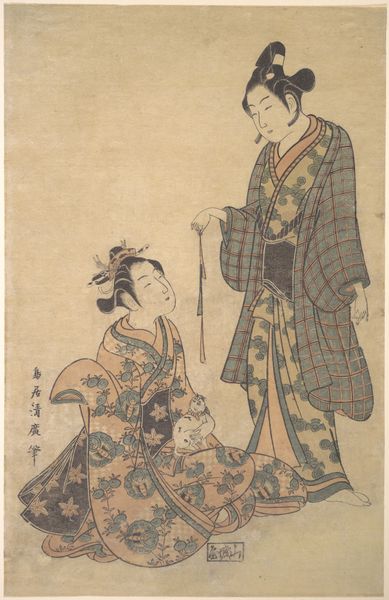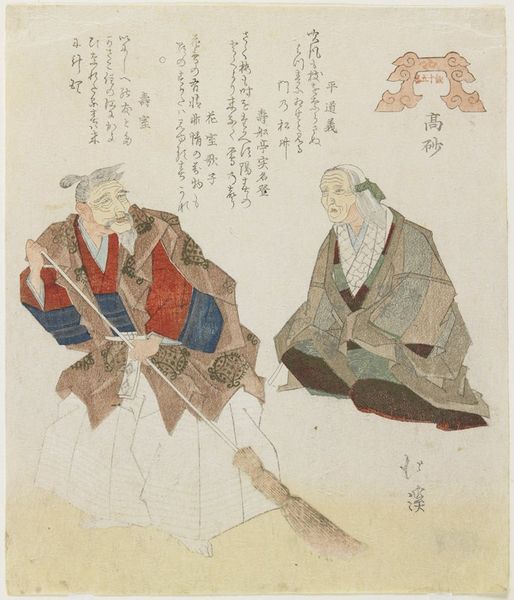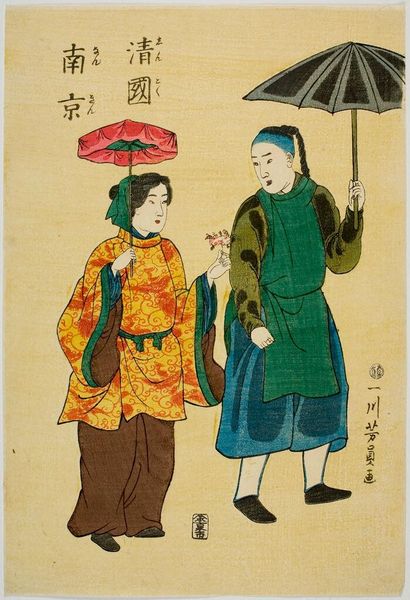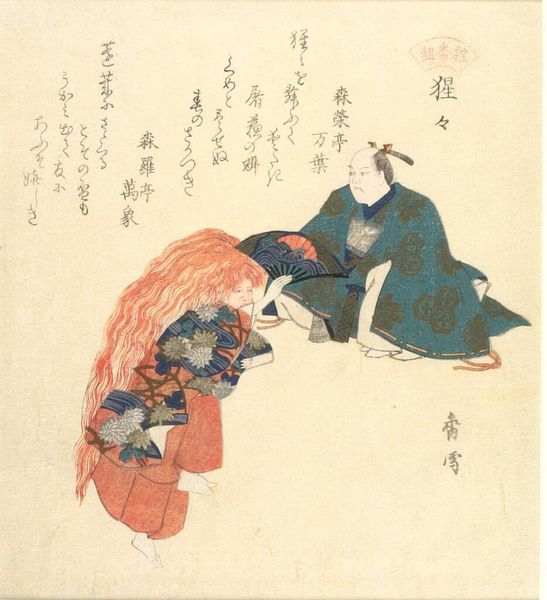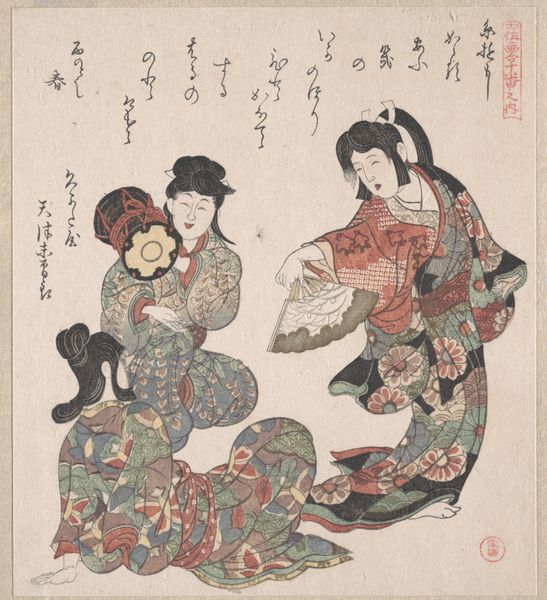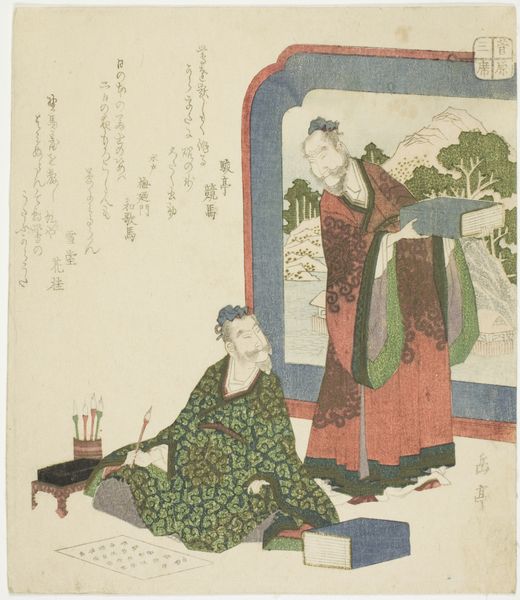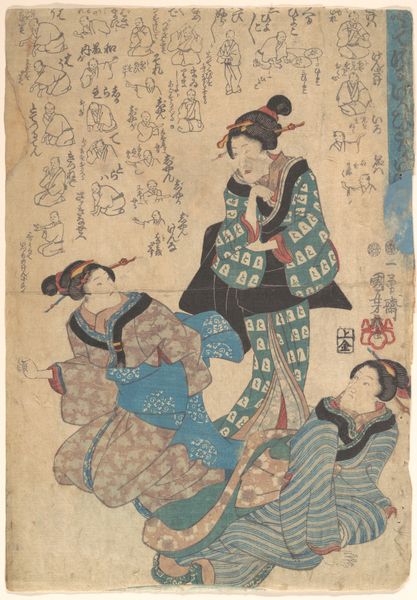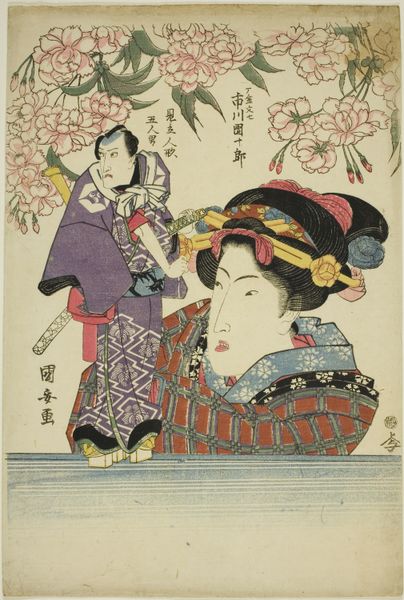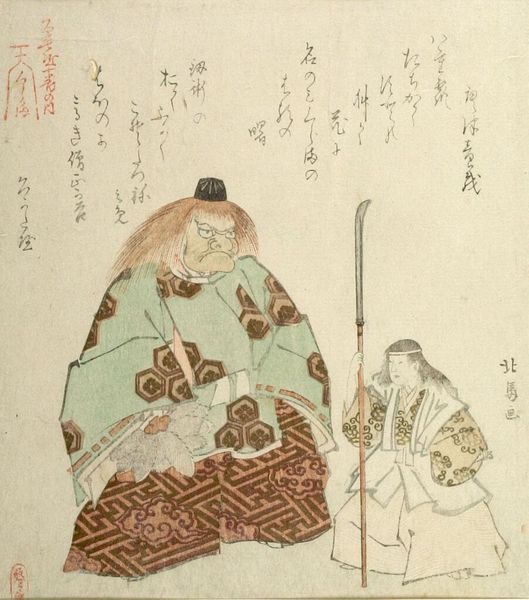
print, woodblock-print
#
narrative-art
# print
#
pattern
#
asian-art
#
ukiyo-e
#
figuration
#
historical fashion
#
woodblock-print
#
line
Copyright: Public domain
Curator: We’re looking at Toyota Hokkei’s “Mountain Witch,” a woodblock print dating back to 1832. It presents two figures, a standing elderly woman with a cane and a seated younger figure. What strikes you initially? Editor: It’s the contrasting textures that immediately capture my attention. The patterns adorning each figure's garments—they’re incredibly distinct, almost vying for visual dominance on the page. Curator: Precisely. The dynamic between figure and ground here feels deliberately flattened, emphasizing surface pattern. Hokkei skillfully manipulates line and color, a testament to his ukiyo-e training. We also see how his engagement in composing surimono, a type of privately commissioned print, allowed a unique expression through printed ephemera, outside the stricter commercial sphere. Editor: That's interesting! I see that it must reflect certain historical rituals too. A lot of details can only be understood under historical lenses, as the symbolism, possibly embedded within the characters’ roles, their poses, would speak about the function of Mountain Witch legend. Curator: Absolutely. Though interpretations vary, folklore positions the mountain witch, or Yamanba, as an ambiguous figure: both monstrous hag and nurturing mother. She’s a liminal being residing in a transitional space. Hokkei creates two women to capture this juxtaposition between motherhood and dangerous spirit. Editor: I am also fascinated by how the visual culture of the time may represent or be different than how women roles really are. So there might be even a clash of expectations with women at the time and it helps question some gender expectations that we can now question too. The medium certainly creates meaning for society by challenging conventional understanding, or just spreading information. Curator: Indeed. The mountain witch in ukiyo-e isn't just about aesthetics. It is a testament to the evolving role of women within their society. Also, in the hands of someone like Hokkei, it becomes an exploration of pattern, color, and line. The result becomes quite remarkable. Editor: And these combined, give the piece it's enduring strength.
Comments
No comments
Be the first to comment and join the conversation on the ultimate creative platform.
